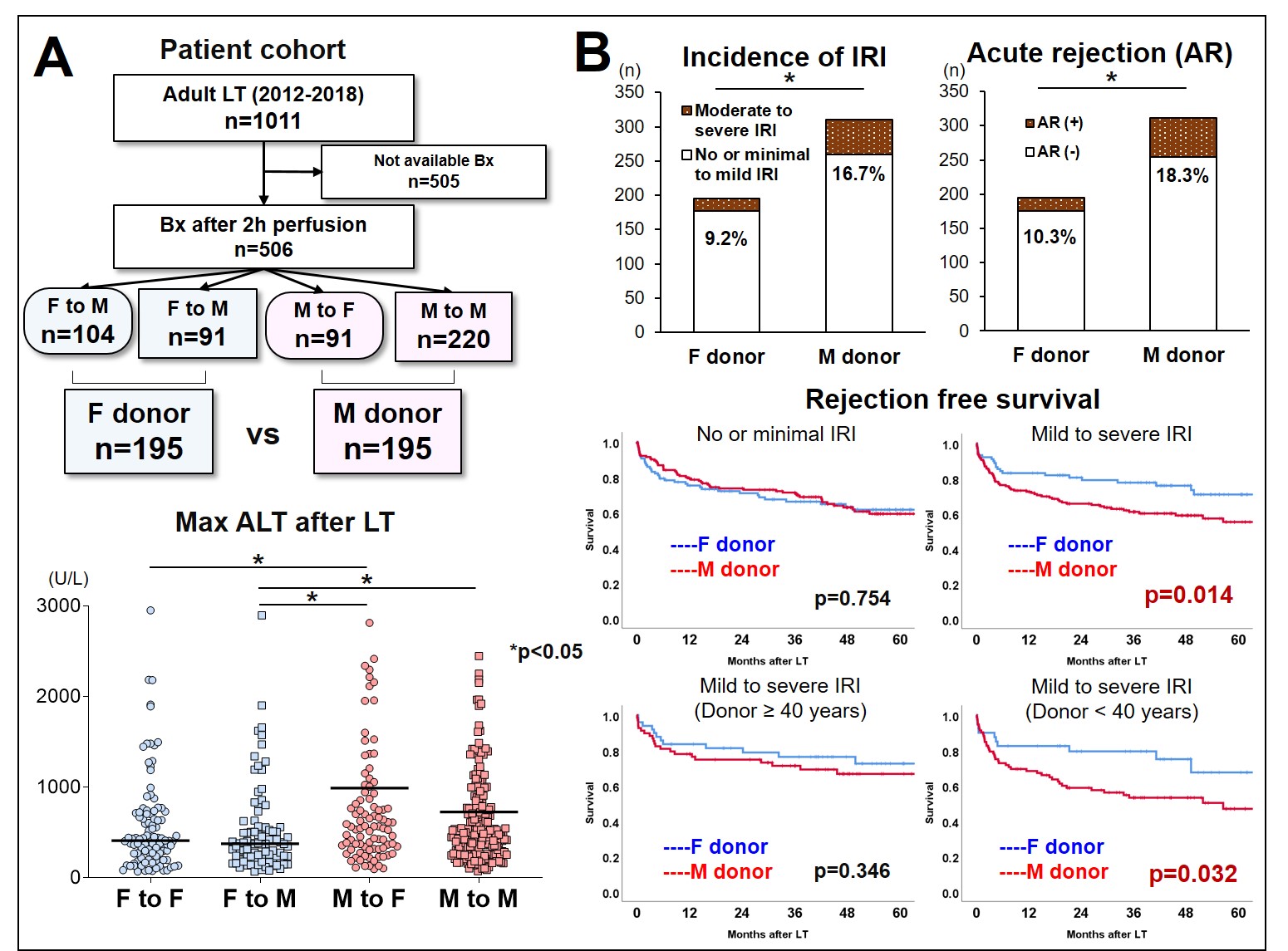The Significance of Donor Gender on Graft Survival and Histological Ischemia Reperfusion Injury in Liver Transplant Patients
Dumont-UCLA Transplant Center, UCLA, Los Angeles, CA
Meeting: 2020 American Transplant Congress
Abstract number: 589
Keywords: Graft survival, Ischemia, Liver grafts, Rejection
Session Information
Session Name: All Organs: Organ Preservation/Ischemia Reperfusion Injury
Session Type: Oral Abstract Session
Date: Saturday, May 30, 2020
Session Time: 3:15pm-4:45pm
 Presentation Time: 3:15pm-3:27pm
Presentation Time: 3:15pm-3:27pm
Location: Virtual
*Purpose: Experimental animal models have demonstrated improved ability of females (F) to recover from ischemia-reperfusion injury (IRI) compared with males (M). Recent work combining human and mice data showed an association between graft dysfunction and gender differences in renal transplantation (JCI 2016). Meanwhile, this gender-dependent response to IRI after liver transplantation (LT) is not established in humans. We aimed to determine the impact of gender differences on graft outcomes in human LT.
*Methods: Post-reperfusion liver biopsies were collected approximately 2 hours after reperfusion during LT. IRI was graded and compared based on histological findings: no IRI, minimal, mild, moderate, and severe. Risk factors for IRI were identified using multivariate logistic regression. Survival was compared by Log rank test (retrospective, 1011 adult LTs, 2012-2018, single center).
*Results: Of 1011 LTs, 506 livers underwent post-reperfusion biopsies. Donor-recipient combinations examined were; F to F (n=104), F to M (n=91), M to F (n=91), M to M (n=220). Among these four groups, there were significant donor gender based differences in post-LT ALT, but not recipient gender (Fig. A). Therefore, we compared outcomes according to donor gender; M donor (n=195) and F donor (n=311). Grafts from female donor had significantly lower post-LT max ALT (389 vs 516 IU/L, p<0.001), rate of severe IRI (moderate to severe IRI: 9.2 vs 16.7%, p=0.018), and acute rejection (10.3 vs 18.3%, p=0.014). Multivariate analysis identified M donor grafts as an independent risk factor for moderate to severe IRI. Notably, F donor grafts showed significantly superior graft rejection free survival (GRFS) in mild to severe IRI grafts (p=0.014), while there were no differences in GRFS in no or minimal IRI grafts between the two groups (p=0.754). Interestingly, this female superiority was found in only young (<40 years) donors. (Fig. B).
*Conclusions: This is the first study demonstrating the significance of donor gender differences on liver IRI in human LT. Grafts from female donors showed lower rates of IRI and superior GRFS in IRI grafts, especially in young donors (<40 years). These results indicate that grafts from young female donors liver grafts are also better suited to tolerate IRI once it has occurred. These findings suggest the need for further examination of gender-specific differences and their potential in the prevention/treatment of IRI after LT.
To cite this abstract in AMA style:
Ito T, Kageyama S, Dery KJ, Nakamura K, Younan SM, Lu MM, III JDiNorcia, Agoian VG, Yersis H, Farmer DG, Busuttil RW, Kaldas FM. The Significance of Donor Gender on Graft Survival and Histological Ischemia Reperfusion Injury in Liver Transplant Patients [abstract]. Am J Transplant. 2020; 20 (suppl 3). https://atcmeetingabstracts.com/abstract/the-significance-of-donor-gender-on-graft-survival-and-histological-ischemia-reperfusion-injury-in-liver-transplant-patients/. Accessed December 13, 2025.« Back to 2020 American Transplant Congress

